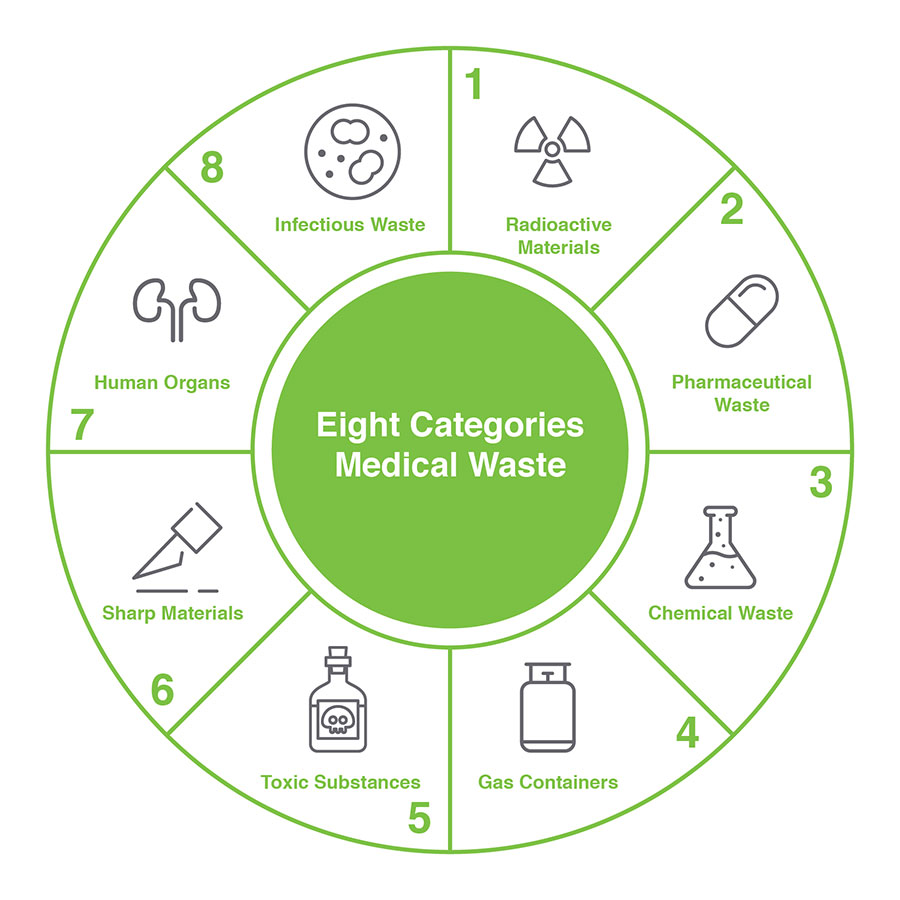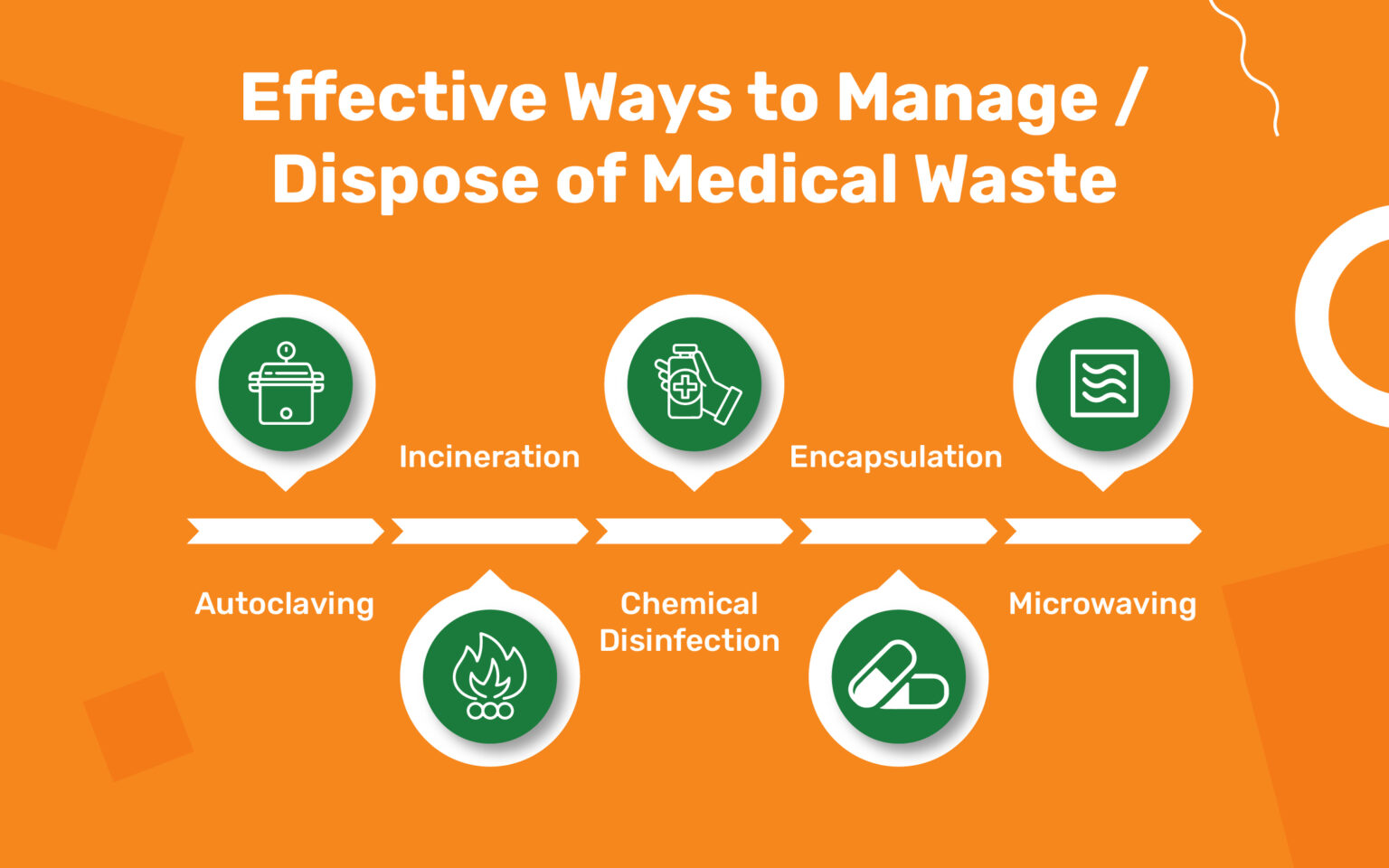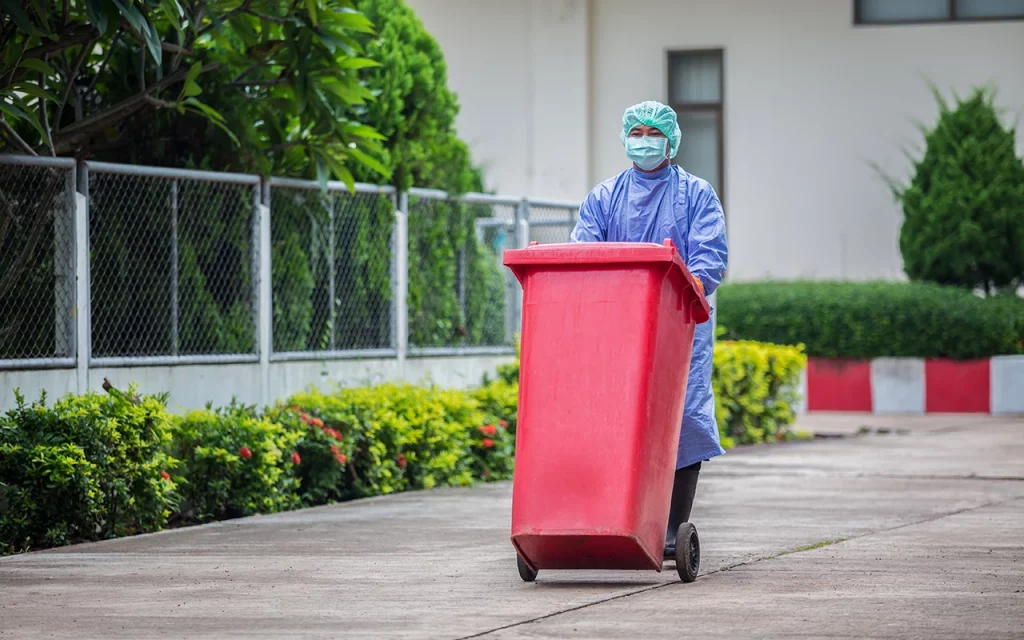Safety and security First: Your Overview to Liable Medical Waste Removal Services
Reliable and Environmentally Friendly Medical Garbage Disposal Solutions
In the ever-evolving field of medical care, the issue of clinical waste disposal remains a subject of vital importance. As hospitals, facilities, and various other health care centers make every effort to offer quality client treatment, they should additionally attend to the challenge of efficiently and sensibly disposing of their waste.
Waste Segregation Practices
Reliable waste segregation techniques are vital to guarantee the proper and risk-free disposal of medical waste. Clinical waste, that includes materials polluted with possibly transmittable substances, should be handled in a manner that lessens the threat of harm to both public wellness and the environment. Correct waste partition plays an important duty in attaining this objective.
Waste partition includes the splitting up of different kinds of waste based upon their features and prospective dangers. This process guarantees that each type of waste is treated and disposed of suitably (medical waste disposal services with WasteX). It begins at the point of generation, where medical care centers ought to have designated bins and containers for various waste categories, such as sharps, transmittable waste, pharmaceutical waste, and non-hazardous waste
By segregating clinical waste at the source, doctor can avoid cross-contamination and decrease the danger of direct exposure to infectious agents. This technique also promotes the recycling and recuperation of certain products. As an example, setting apart and reusing tidy plastics and glass lowers the need for basic materials and decreases the environmental effect of medical waste disposal.

Autoclaving and Sterilization Strategies
In order to make sure the risk-free and correct disposal of clinical waste complying with efficient waste segregation methods, healthcare centers have to utilize autoclaving and sanitation methods. Autoclaving is an extensively utilized approach that uses high-pressure vapor to decontaminate medical waste.
This includes treating the waste with chemicals such as ethylene oxide or hydrogen peroxide, which kill microorganisms by disrupting their mobile framework. It is essential to keep in mind that chemical sterilization requires proper handling and disposal of the chemicals utilized, as they can be dangerous to human wellness and the atmosphere if not taken care of correctly.
On-Site Waste Treatment Systems
Healthcare centers have actually implemented on-site waste treatment systems to deal with the disposal of medical waste in a efficient and safe fashion. These systems supply a practical and cost-efficient service for managing clinical waste generated within the facility. On-site waste therapy systems make use of numerous innovations to get rid of and deal with of clinical waste on-site, reducing the demand for transportation to off-site centers.
One generally utilized on-site waste treatment system is the microwave innovation. One more system is the chemical sanitation technology, which includes treating medical waste with chemicals to eliminate pathogens and reduce its harmful nature. medical waste disposal services with WasteX.
They eliminate the danger of clinical waste being mishandled during transport, lowering the potential for contamination and exposure to harmful substances. On-site treatment systems decrease the overall environmental effect of clinical waste by decreasing transportation and the need for garbage dump space.
Recycling and Repurposing Campaigns
As health care centers pursue lasting waste administration practices, they are increasingly exploring recycling and repurposing initiatives as a way of reducing the environmental influence of clinical waste. Recycling and repurposing efforts involve locating ingenious means to recycle or change clinical waste right into new items or materials. Home Page This not only aids to lessen the volume of waste that winds up in incinerators or land fills however likewise reduces the intake of resources and energy required for making brand-new products.
One example of recycling in the health care industry is the reprocessing of single-use medical gadgets. These gadgets, such as surgical instruments or catheters, are commonly disposed of after a solitary use. Nevertheless, developments in technology and stringent sanitation processes have actually made it feasible to securely clean, disinfect, and reuse these devices multiple times. This not just lowers the quantity of waste produced yet also conserves medical care facilities significant costs linked with purchasing new gadgets.
One more recycling campaign involves the recycling of plastic containers, such as drug bottles or syringe cases. These containers can be accumulated, arranged, and sent out to recycling facilities where they are refined, thawed down, and transformed right into new plastic items. This assists to preserve resources and lower the demand for virgin plastic production.
In addition to reusing, repurposing efforts entail finding alternative usages for medical waste. For example, shredded paper waste from medical documents or packaging products can be repurposed as bedding product for pets or as insulation product (medical waste removal). Natural waste such as food scraps from health care centers can be composted and used as plant food in yards or farming areas.

Renewable Power Solutions
One effective method to alleviating the environmental influence of healthcare operations involves applying renewable power services. Health care facilities, such as health centers and clinics, consume substantial quantities of power for numerous purposes, including lighting, home heating, cooling, and operating medical equipment. By transitioning to renewable resource resources, these facilities can considerably lower their carbon impact and add to an extra lasting future.

Executing renewable resource solutions in health care centers not just reduces greenhouse gas emissions however likewise supplies lasting cost savings. While the initial investment in sustainable power framework might be greater, the long-term operational costs of renewable resource systems are significantly lower compared to conventional fossil fuel-based energy sources. Furthermore, eco-friendly power systems are reliable and can provide a continuous and steady power supply, ensuring continuous health care services even during power outages or emergencies.
Verdict
To conclude, applying reliable and eco pleasant clinical garbage disposal options is necessary for preserving a sustainable healthcare system. By taking on waste partition techniques, autoclaving and sterilization methods, on-site waste treatment systems, reusing and repurposing efforts, and renewable resource remedies, health care facilities can considerably decrease their environmental impact. These steps not only secure the setting but also promote public health and security. It is vital for health care companies to prioritize the implementation of these lasting waste disposal practices.
It starts at the factor of generation, where healthcare facilities need to have designated containers and containers for various waste categories, such as sharps, contagious waste, pharmaceutical waste, and non-hazardous waste.
In Read Full Article order to make certain the correct and safe disposal of medical waste complying with reliable waste partition practices, health care facilities should utilize autoclaving and sanitation strategies.Healthcare facilities have carried out on-site waste therapy systems to address the disposal of medical waste in a risk-free and reliable manner. On-site waste treatment systems utilize various innovations to get rid of and deal with of medical my latest blog post waste on-site, lessening the demand for transport to off-site centers.
As healthcare facilities aim for sustainable waste administration methods, they are progressively checking out recycling and repurposing campaigns as a means of reducing the environmental impact of clinical waste. - medical waste removal near me